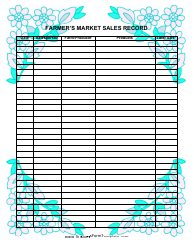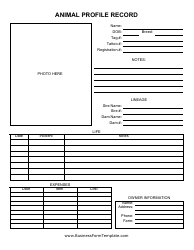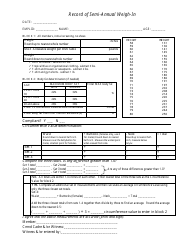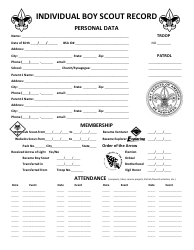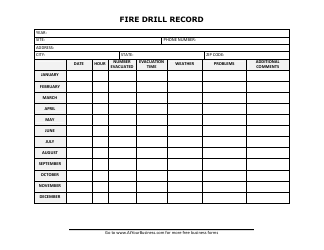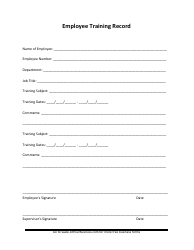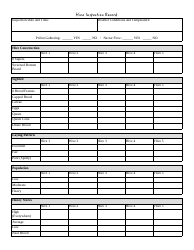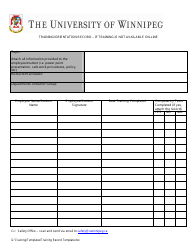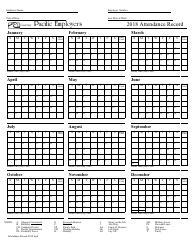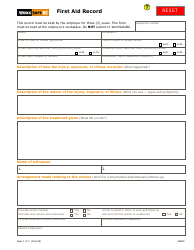Receiving Record Form
A Receiving Record Form is used to document the receipt of goods or services. It helps track and verify deliveries, ensuring that the correct items are received and in the expected condition.
The receiving record form is usually filed by the person or department responsible for receiving the goods or services.
FAQ
Q: What is a receiving record form?
A: A receiving record form is a document used to track and document the receipt of goods or services.
Q: Why is a receiving record form important?
A: A receiving record form is important as it provides proof of receipt and can be used for quality control, inventory management, and dispute resolution purposes.
Q: What information is typically recorded on a receiving record form?
A: Typically, a receiving record form includes details such as the date of receipt, the quantity and description of items received, the name of the person receiving the items, and any notes or remarks.
Q: Who typically completes a receiving record form?
A: A receiving record form is typically completed by the person or department responsible for receiving the goods or services.
Q: Can a receiving record form be used for returns or exchanges?
A: Yes, a receiving record form can be used to document returns or exchanges by indicating the reason for return or exchange and any adjustments made to the inventory.
Q: Are receiving record forms legal documents?
A: Receiving record forms are not typically considered legal documents, but they can serve as supporting evidence in disputes or legal proceedings.
Q: How long should receiving record forms be kept?
A: It is generally recommended to retain receiving record forms for a certain period of time (e.g., 1-3 years) for recordkeeping and auditing purposes.
Q: Can receiving record forms be stored electronically?
A: Yes, receiving record forms can be stored electronically as long as they meet the requirements for electronic recordkeeping and are easily accessible and retrievable.
Q: Are there any specific regulations or guidelines for completing receiving record forms?
A: While there may not be specific regulations, it is important to follow internal organizational policies and procedures when completing receiving record forms to ensure accuracy and consistency.
Q: Can receiving record forms be customized for specific needs?
A: Yes, receiving record forms can be customized to include additional fields or information that may be relevant to specific industries or organizations.
Q: What are some common challenges with using receiving record forms?
A: Common challenges with using receiving record forms include incomplete or inaccurate information, delayed or lost forms, and difficulty in retrieving or accessing older records.
Q: Are there any alternatives to using receiving record forms?
A: While receiving record forms are commonly used, there are alternative methods such as electronic data interchange (EDI) systems or barcode scanning technologies that can automate the receiving process and eliminate paper forms.
Q: Who should be trained on using receiving record forms?
A: Personnel involved in the receiving process, such as warehouse staff, procurement officers, or inventory managers, should be trained on how to properly complete and use receiving record forms.
Q: Can receiving record forms be used across different industries?
A: Yes, receiving record forms can be used across different industries and sectors that involve the receipt of goods or services.
Q: What are some benefits of using receiving record forms?
A: Benefits of using receiving record forms include improved organization, better inventory management, increased accountability, and enhanced recordkeeping.
Q: Can receiving record forms be used for international shipments?
A: Yes, receiving record forms can be used for international shipments to track the receipt of goods and ensure compliance with customs regulations.
Q: Can automated systems integrate with receiving record forms?
A: Yes, automated systems such as inventory management software or enterprise resource planning (ERP) systems can integrate with receiving record forms to streamline the receiving process and improve efficiency.
Q: What should be done if there are discrepancies on a receiving record form?
A: If there are discrepancies on a receiving record form (e.g., missing items, damaged goods), it is important to document the issue, notify the appropriate parties, and initiate any necessary actions (e.g., return, exchange, or claim).





